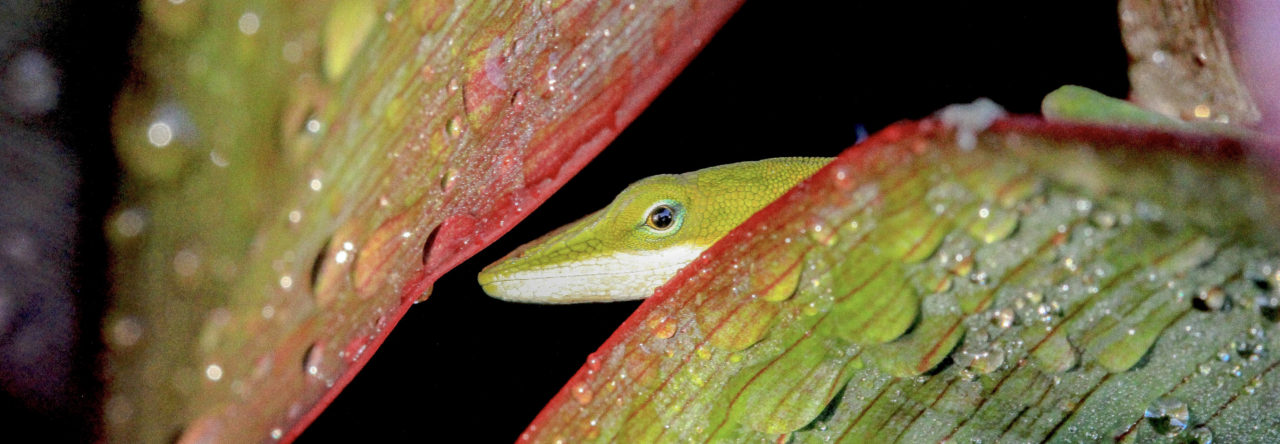
Green anole with a regrowing tail. Photo from Daffodil’s Photo Blog.
Lorenzo Alibardi is conducting detailed studies of what the cells are doing as the tail regenerates. His latest work is now available online in the Journal of Morphology. Here’s the abstract:
Using an antibody against a lizard telomerase-1 component the presence of telomerase has been detected in regenerating lizard tails where numerous cells are proliferating. Immunoblots showed telomerase positive bands at 75–80 kDa in normal tissues and at 50, 75, and 90 kDa in those regenerating. Immunofluorescence and ultrastructural immunolocalization showed telomerase-immunoreactivity in sparCe (few/diluted) mesenchymal cells of the blastema, early regenerating muscles, perichondrium of the cartilaginous tube, ependyma of the spinal cord, and in the regenerating epidermis. Clusters of gold particles were detected in condensing chromosomes of few mesenchymal and epithelial cells in the regenerating tail, but a low to undetectable labeling in interphase cells. Telomeraseimmunoreactivity was intense in the nucleus and sparCe (few/diluted) in the cytoplasm of spermatogonia and spermatocytes and drastically decreased in early spermatids where some nuclear labeling remains. Some intense immunoreactivity was seen in few cells near the basal membrane of intestinal enterocytes or in leukocytes (likely lymphocytes) of the intestine mucosa. In spermatogonia, spermatids and in enterocytes part of the nuclear labeling formed cluster of gold particles in dense areas identified as Cajal Bodies, suggesting that telomerase is a marker for these stem cells. This therefore suggests that all of the sparCe (few/diluted) telomerase positive cells detected in the regenerating tail may represent sparCe (few/diluted) stem cells localized in regenerating tissues where transit amplifying cells are instead preponderant to allow for tail growth. This observation supports previous studies indicating that few stem cells are present in the stump after tail amputation and give rise to transit amplifying cells for tail regeneration.
- Evolution in Real Time on Lizard Island - March 23, 2025
- Spider Snags Adult Anolis osa - March 22, 2025
- An Homage to the Green Anoles of New Orleans - March 21, 2025


Leave a Reply